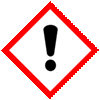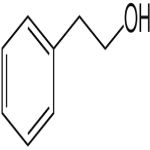Phenethyl Alcohol, 2-Phenyl Ethanol USP Grade, Phenylethyl Alcohol SDS of Suppliers Exporters, Manufacturers
Phenethyl Alcohol
CAS Number: 60-12-8 2-Phenyl Ethanol, Phenylethyl Alcohol USP Grade Suppliers Exporters, Manufacturers
Please visit Main Page of Phenethyl Alcohol, 2-Phenyl Ethanol, Phenylethyl Alcohol USP Grade Manufacturers.
Phenethyl alcohol SDS GHS, Safety Data Sheet
MSDS Sheet 11-May-22
1. Product Identification
Product Name & Other Names: 2-phenylethanol or Benzyl carbinol or 2-phenylethanol or Benzyl carbinol.
CAS No.: 60-12-8
EINECS EC Number: 200-456-2
Relevant uses and uses advised against (if any): Industrial Manufacturing.
Suppliers: As per letterhead.
2. Hazards Identification
GHS, Globally Harmonized System Classification in accordance with 29 CFR 1910
Classification according to Regulation (EC) No 1272/2008
Acute toxicity, oral Category 4, H302
Serious eye damage/eye irritation Category 2A, H319
Labeling according to GHS & Regulation (EC) No 1272/2008
GHS Label Elements  Irritant |
Signal Words: Warning
Hazard statements:
H302: Harmful if swallowed.
H319: Causes serious eye irritation.
Precautionary statements:
P264: Wash … thoroughly after handling.
P270: Do not eat, drink, or smoke when using this product.
P280: Wear protective gloves/protective clothing/eye protection/face protection.
P330: Rinse mouth.
P301+312: IF SWALLOWED: Call a POISON CENTER or doctor/physician if you feel unwell.
P305+351+338: IF IN EYES: Rinse cautiously with water for several minutes. Remove contact lenses if present and easy to do – continue rinsing.
P337+313: If eye irritation persists get medical advice/attention.
P501: Dispose of contents/container in accordance with local/regional/national/international regulation.
3. Composition/Information on Ingredients
Product Name & Other Names: 2-phenylethanol or Benzyl carbinol or 2-phenylethanol or Benzyl carbinol.
CAS No.: 60-12-8
EINECS EC Number: 200-456-2
4. First Aid Measures
Always seek medical attention after first aid measures are provided.
Inhalation: Remove to fresh air. If not breathing, give artificial respiration. If breathing is difficult, give oxygen. Get medical attention.
Ingestion: Never give anything by mouth to an unconscious person. Get medical attention.
Skin Contact: Wipe off excess material from skin then immediately flush skin with plenty of water for at least 15 minutes. Remove contaminated clothing and shoes. Get medical attention. Wash clothing before reuse. Thoroughly clean shoes before reuse.
Eye Contact: Immediately flush eyes with plenty of water for at least 15 minutes, lifting lower and upper eyelids occasionally. Get medical attention immediately.
5. Fire Fighting Measures
Flammability of the Product: Combustible at elevated temperature.Vapors can travel to a source of ignition and flash back.
Flash Points: 102C Closed Cup.
Products of Combustion: Fumes, Carbon dioxide & Carbon Monoxide.
Fire Extinguishing Media: Use means suitable for extinguishing surrounding fire. Use water spray, alcohol-resistant foam, dry chemical, or carbon dioxide.
Extinguishing Media Not recommended: Avoid using solid water jet as it may scatter the fire.
Special Information: In the event of a fire, wear full protective clothing and NIOSH-approved self-contained breathing apparatus with full face piece operated in the pressure demand or other positive pressure mode. At elevated temperatures under fire conditions, it may produce toxic or irritating fumes. Fire-extinguishing work is done from the windward and the suitable fire-extinguishing method according to the surrounding situation is used. Uninvolved persons should evacuate to a safe place.
6. Accidental Release Measures
Personal precautions, protective equipment, and emergency procedures: Avoid breathing dust/fumes/gas/mist/vapors/spray. Use individual protective equipment (waterproof boots, suitable protective clothing, safety glasses, etc.). Do not approach facing the wind.
Environmental precautions: Do not let the product enter drains, soil, or water sources.
Methods and materials used for containment cleanup procedures and Storage: Contain spilled material. Do not let the product enter drains. Use a shovel to put the material into a convenient waste disposal container. Finish cleaning by spreading water on the contaminated surface and allow evacuating as per law.
7. Handling and Storage
Precautions for safe handling: Apply according to good manufacturing and industrial hygiene practices. Ensure proper ventilation. In case of insufficient ventilation, wear suitable respiratory equipment. Wash thoroughly after handling. Do not drink, eat, or smoke while handling. Avoid contact with skin, eyes, and clothing. Minimize dust generation. Avoid breathing dust/fumes/gas/mist/vapors/spray. Use individual protective equipment (waterproof boots, suitable protective clothing, safety glasses, etc.).
Conditions for safe storage, including any incompatibilities: Store in cool, dry, and ventilated area away from heat sources and protected from sunlight in tightly closed original container. Keep air contact to a minimum. Store protected from heat, sparks and ignition sources and incompatible materials. Do not store with incompatible materials like strong oxidizing agents, acids, strong bases. Keep away from heat, sun light.
8. Exposure Controls/Personal Protection
Airborne Exposure Limits: Not Specified.
Ventilation System: A system of local and/or general exhaust is recommended to keep employee exposures as low as possible.
Personal Respirators (NIOSH Approved): For conditions of use where exposure to dust or mist is apparent and engineering controls are not feasible, a particulate respirator may be worn.
Skin Protection: Wear protective gloves and clean body-covering clothing.
Eye Protection: Use chemical safety goggles and/or full-face shield where dusting or splashing of solutions is possible. Maintain eye wash fountain and quick-drench facilities in work area.
Other Control Measures: Maintain good housekeeping in work area. Handle in accordance with good industrial hygiene and safety practice.
9. Physical and Chemical Properties
Appearance: It is colorless to yellowish liquid.
Odor: Strong typical floral.
Odor threshold: No data available.
pH: No data available.
Relative density: around 1.02
Boiling Point: 219C - 221C.
Melting Point: -27C.
Flash point: No data available.
Auto-ignition temperature: No data available.
Decomposition temperature: No data available.
Upper/lower flammability or explosive limits: No data available.
Vapor pressure: No data available.
Vapor density: No data available.
Evaporation rate: No data available.
Flammability (solid, gas): No data available.
Partition coefficient: n-octanol/water: No data available.
Solubility: It is slightly soluble in water.
Viscosity: No data available.
Molecular Weight: 122.16
Molecular Formula: C6H5CH2CH2OH.
10. Stability and Reactivity
Stability: It is stable under ordinary conditions of use and storage.
Hazardous Decomposition Products: It emits carbon monoxide & fumes when heated to decomposition. It may form harmful gases.
Hazardous Polymerization: Will not occur.
Incompatibilities: Strong oxidizing agents, acids, strong bases.
Conditions to Avoid: Incompatible materials, light, dust generation, excess heat.
11. Toxicological Information
Toxicity data
LD50 Oral - Rat - 1,790 mg/kg(2-Phenylethanol)
LD50 Dermal - Rabbit - 2,535 mg/kg(2-Phenylethanol)
Carcinogenicity: No component of this product present at levels greater than or equal to 0.1% is identified as possible or confirmed human carcinogen by IARC, ACGIH, OSHA and NTP.
Teratogenic Effects: No data available.
Mutagenic Effects: No data available.
Developmental Toxicity: Adverse reproductive effects have occurred in experimental animals.
Reproductive Effects: No data available.
12. Ecological Information
Toxicity to fish:
Freshwater Fish: LC50=220-460 mg/L 96 h
Water Flea: EC50=287.17mg/L 48 h
Freshwater Algae: EC50=490mg/L 72 h
Environmental Fate: This substance is expected to have a high biological oxygen demand. It is readily biodegradable and has low bioconcentration potential.
Results of PBT and vPvB assessment: This substance/mixture contains no components considered to be either persistent, bioaccumulative and toxic (PBT), or very persistent and very bioaccumulative (vPvB) at levels of 0.1% or higher.
13. Disposal Considerations
Whatever cannot be saved for recovery or recycling should be managed in an appropriate and approved waste disposal facility.
14. Transport Information
DOT USA, TDG Canada & ADR/RID Europe: Not dangerous goods.
ICAO/IATA: Not dangerous goods.
IMDG/IMO: Not dangerous goods.
15. Regulatory Information
USA:
SARA 311/312: See section 2.
16. Other Information
DISCLAIMER: The information and recommendations set forth herein are presented in good faith and believed correct as of the date hereof. It is compiled from various sources, and it is not necessarily all inclusive nor fully adequate in every circumstance. In addition, these suggestions should not be confused with nor followed in violation of applicable laws, regulations, rules, or insurance requirements applicable. This MSDS sheet is intended only as a guide to the appropriate precautionary handling of the material by a professionally trained person using this product. Individuals receiving the information must exercise their independent judgment in determining its appropriateness for a particular purpose.
Please visit Technical Data Sheet of Phenethyl Alcohol, 2-Phenyl Ethanol, Phenylethyl Alcohol USP Grade Suppliers.
Phenethyl Alcohol, 2-Phenyl Ethanol Phenylethyl Alcohol CAS Number 60-12-8 & Phenoxyethanol CAS Number 122-99-6 Supplier Exporter, Manufacturer:
Annie Chemie P Ltd
Mumbai 4000010, INDIA
With Agents and offices in UAE, USA, Europe.
e-mail: info@anniechemie.com
Copyright and Usual Disclaimer is Applicable.
June 1, 2025
Exporters to USA, Canada, UK, Europe, UAE, Nigeria, Algeria, Turkey, Mexico, Brazil, Chile, Argentina, Australia, Dubai etc.
Perfection is made up of small things and that is a big thing.
